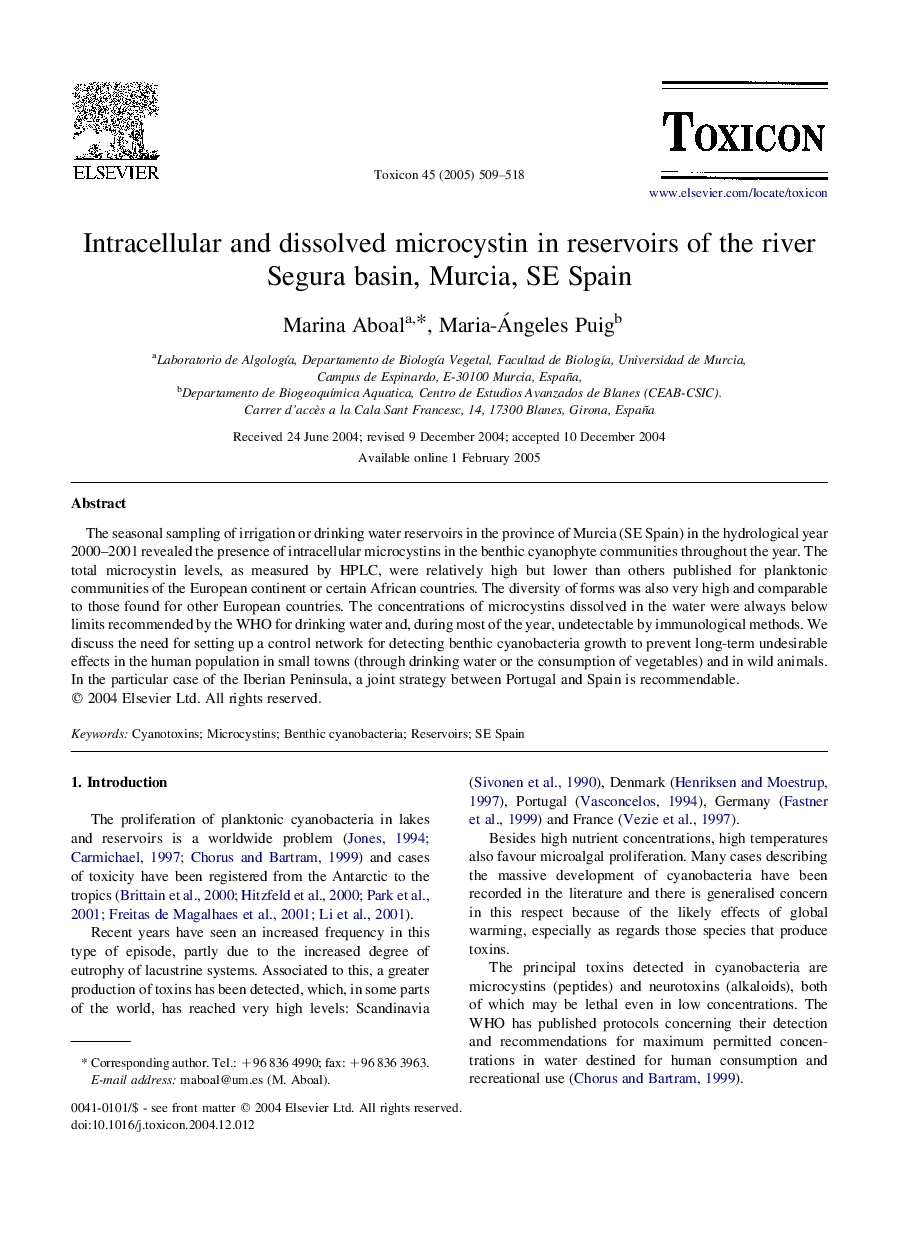| Article ID | Journal | Published Year | Pages | File Type |
|---|---|---|---|---|
| 10880281 | Toxicon | 2005 | 10 Pages |
Abstract
The seasonal sampling of irrigation or drinking water reservoirs in the province of Murcia (SE Spain) in the hydrological year 2000-2001 revealed the presence of intracellular microcystins in the benthic cyanophyte communities throughout the year. The total microcystin levels, as measured by HPLC, were relatively high but lower than others published for planktonic communities of the European continent or certain African countries. The diversity of forms was also very high and comparable to those found for other European countries. The concentrations of microcystins dissolved in the water were always below limits recommended by the WHO for drinking water and, during most of the year, undetectable by immunological methods. We discuss the need for setting up a control network for detecting benthic cyanobacteria growth to prevent long-term undesirable effects in the human population in small towns (through drinking water or the consumption of vegetables) and in wild animals. In the particular case of the Iberian Peninsula, a joint strategy between Portugal and Spain is recommendable.
Related Topics
Life Sciences
Biochemistry, Genetics and Molecular Biology
Biochemistry, Genetics and Molecular Biology (General)
Authors
Marina Aboal, MariaâÁngeles Puig,
